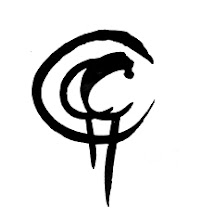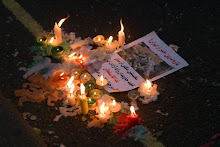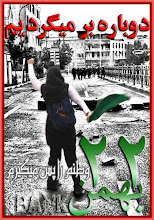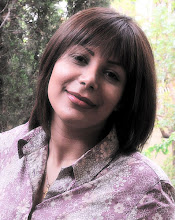Introduction
Michael Cardew, (1901-1983), was, and still is, one of the
most highly regarded potters of the 20th century. Along with Bernard
Leach, he pioneered both the aesthetics and the technical know-how of the
modern studio pottery movement, or what we now call ceramics.
Tanya Harrod’s detailed journey through his life and work is
an epic sweep across the social, political, and art history of the 20th
century. Her biography opens before Cardew was born with a brief look back at his
ancestry, introducing his well to do, highly educated, upper-middle class
family, and closes after he dies, looking forward to the impact of his extraordinary
legacy which crosses well beyond the borders of craft pottery and the arts to
embrace anthropology, politics, and the ecological and alternative movements of
the 20th Century.
Early life and love
Cardew was born and raised in Wimbledon, South-West London,
with regular family holidays at a seaside house in Staunton in Devon, where he
grew to love the traditional English slipware pottery still being made at nearby
Fremington. As a teenager, while doing agricultural work with his school during
WWI, he experienced his first male love and subsequent rejection. While his
love of slipware flourished, his love of other men became highly conflicted and
was largely closeted throughout his life; he longed for ‘normality,’ for marriage
and children.
He studied Classics at Oxford but then rejected the expected
career of a socially privileged, scholarly male and, instead, pursued his love
of pottery. He trained with Bernard Leach in St. Ives and, within a few years, set
up his first pottery, retrieving the abandoned kiln and workshops at Winchcombe
in Gloucestershire. Here he had success in both his pottery ambitions and in
love but, nonetheless, longed to return to Cornwall. It was at Winchcombe that
he met and married
Mariel Russell and where their three children were born. Here too he developed
his life-long preference for ‘austerity.’ He rejected what he referred to as
‘bourgeois’ affectations, preferring the sometimes harsh conditions of the
struggling rural potter.
Cornwall and West
Africa
In 1939, he left Winchombe with Mariel and the children to realise
the dream and set up the Conrnwall pottery at Wenford Bridge. This saw the
beginning of a series of disastrous firings and relentless, unforgiving
struggle. With the onset of WWII Cardew decided to leave Mariel and the children
to cope with the inconclusive chaos at Wenford and, in 1942, got a posting to
Ghana, then called the Gold Coast and still a British Colony. Here, at
Achimota, he set up what would be the first of three pottery workshops in West
Africa. It was also here that he met and formed a lasting relationship with a
young man called Clement Kofi Athey. After Achimota, he went with ‘Kofi’ to Vume
on the Volta River, and set up the second workshop. The third was near Abuja,
in Northern Nigeria.
For five years, the failed firings continued
but, at the point of transferring to Abuja, with an adjustment to the kiln
design, they began to yield much needed success. It was also in Abuja that
Ladi Kwali, an immensely gifted Nigerian potter, using traditional handbuilding
methods, joined Cardew and his team and learnt to use the wheel and work with
stoneware and glazes, while also doing with her own work. Ladi Kwali later
became a major star, touring the USA with ‘Kofi’ and Cardew and also visiting
the UK. Cardew left Nigeria in 1963, after independence, and returned
to Wenford Bridge. Mariel was living in London now but regularly visited Wenford. 'Kofi' also came to Wenford
for some time but returned to Ghana and Cardew continued to visit him there.
Over the next twenty years, Wenford Bridge became a magnet for aspiring studio
potters from all over the world and Cardew did numerous speaking tours to
USA, Canada, New Zealand, and Australia.
Conclusion
Michael Cardew’s working life spanned sixty years, (1923-83),
in Britain and West Africa. Tanya Harrod navigates this vast and complicated
historical terrain with formidable political agility. She applies forensic critical
scrutiny to the colonial context of working, personal and romantic
relationships as well as to the wider social contexts. We learn about Nigerian
contemporary art movements and evolving independence movements in both Ghana
and Nigeria. Cardew’s tours of the USA and Canada and his relationships there
are all explored in the context of the civil rights, anti-Vietnam war, gay
rights and ecology movements.
We hear the voice of Clement Kofi Athey from his letters and
through others who knew him. He does not appear only as a colonial ‘subject’
but as an active player with his own concerns and priorities. We also hear
the opinions and memories of the villagers at Vume and Abuja from interviews
and site visits. We hear from Mariel’s friends, colleagues and associates, as
well as from her own letters and diaries. Harrod brings an admirably cool head
combined with considerable compassion to the complicated tangle of both
homosexual and heterosexual relationships, enabling a fully rounded picture of
all concerned to emerge.
Cardew eschewed industrial processes, insisting on
developing a pottery ‘from the ground up,’ starting with making and firing the
kiln bricks, digging up local clay and grinding rocks for glaze materials. Undaunted, Harrod
deftly picks her way through the details of craft pottery - the firing
temperatures, the nature and feel of the clay, the machinery and general grub
and grit as well of the science and aesthetics of the business.
This is painstaking historical research combined with
fluent, inspired storytelling. It’s a glorious book, one that will live near
you and will be read and reread, argued over and discussed. Buy it new - second
hand copies will be rarer than hen’s teeth!












































No comments:
Post a Comment